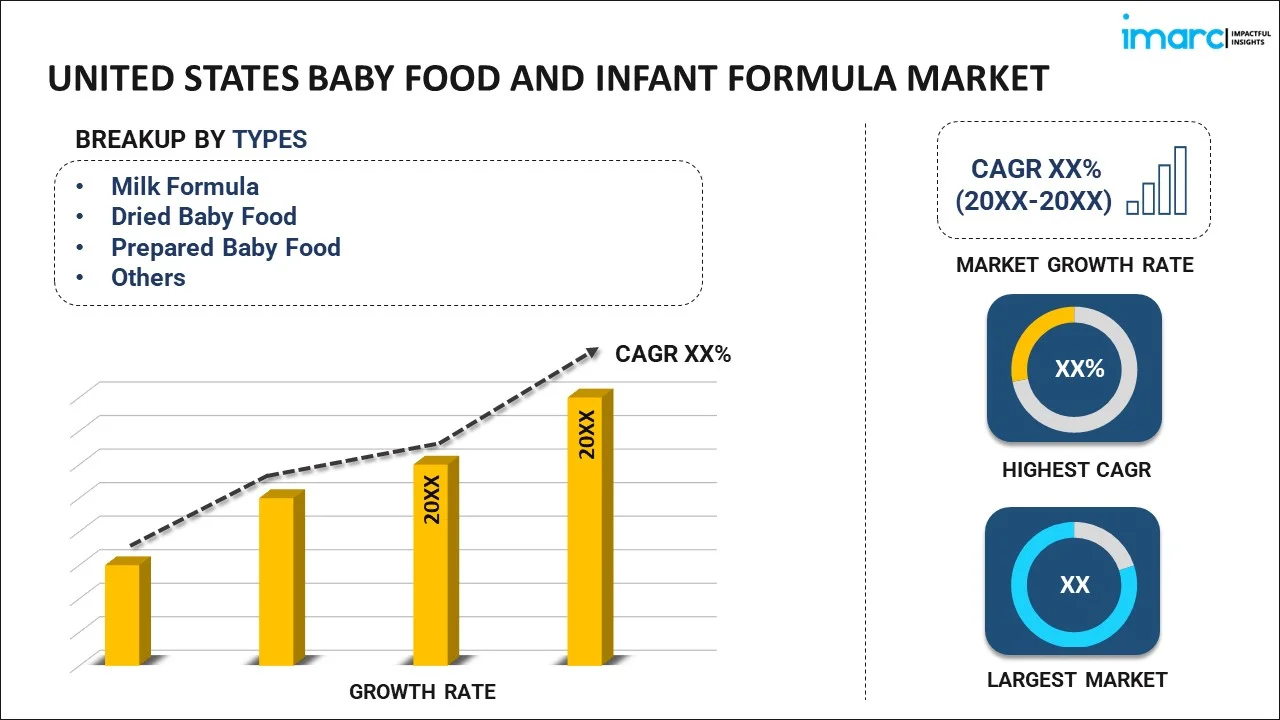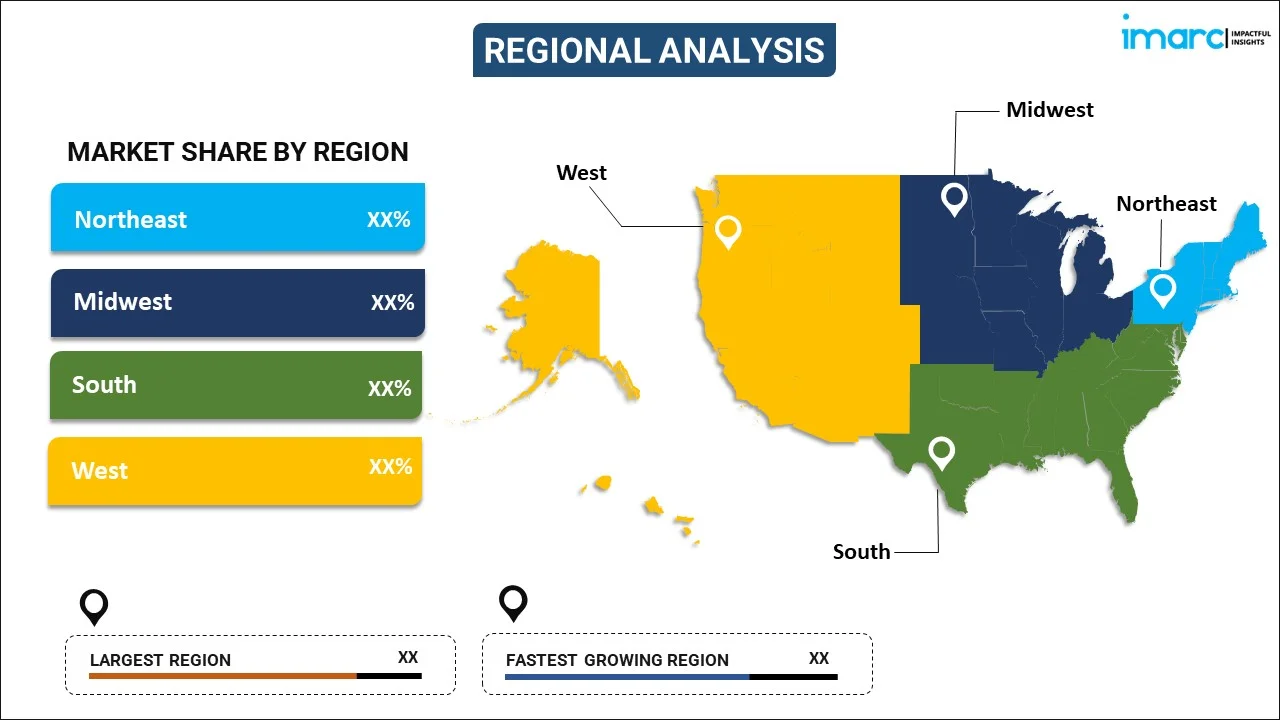
United States Baby Food and Infant Formula Market Report by Type (Milk Formula, Dried Baby Food, Prepared Baby Food, and Others), Distribution Channel (Supermarkets and Hypermarkets, Pharmacies, Convenience Stores, and Others), and Region 2025-2033
Market Overview:
The United States baby food and infant formula market size reached USD 9.4 Billion in 2024. Looking forward, IMARC Group expects the market to reach USD 14.6 Billion by 2033, exhibiting a growth rate (CAGR) of 4.79% during 2025-2033.
|
Report Attribute
|
Key Statistics
|
|---|---|
|
Base Year
|
2024
|
|
Forecast Years
|
2025-2033
|
|
Historical Years
|
2019-2024
|
|
Market Size in 2024
|
USD 9.4 Billion |
|
Market Forecast in 2033
|
USD 14.6 Billion |
| Market Growth Rate 2025-2033 | 4.79% |
Baby food refers to the soft and easy to consume food products manufactured using mashed fruits, vegetables and cereals for infants and toddlers. Infant formula consists of milk protein-based ingredients, and it serves as a substitute for breast milk for babies under the age of 12 months. Milk formula, prepared and dried baby food are some commonly available variants. They are a rich source of various nutrients, such as proteins, carbohydrates, vitamins, linoleic acid, fat and prebiotics, that assist in the overall development of the babies. Additionally, as infants lack teeth for chewing, baby food and infant formula act as the primary source of nutrition for them.
The United States baby food and infant formula market is primarily being driven by the increasing awareness among parents regarding nutrient-rich baby food products to provide a balanced diet to their children. Moreover, the introduction of organic baby food products is providing a thrust to the market growth. These variants are processed and manufactured without synthetic fertilizers, pesticides, growth hormones, antibiotics and other chemicals. The rising demand for ready-to-eat (RTE) baby food products due to the hectic schedules and strong expenditure capacities of consumers are also favoring the market growth. In line with this, the proliferation of online retail channels and various brand endorsements on social media platforms are also positively impacting the market growth across.
Key Market Segmentation:
IMARC Group provides an analysis of the key trends in each sub-segment of the United States baby food and infant formula market report, along with forecasts at the country and regional level from 2025-2033. Our report has categorized the market based on type and distribution channel.
Breakup by Type:

- Milk Formula
- Dried Baby Food
- Prepared Baby Food
- Others
Breakup by Distribution Channel:
- Supermarkets and Hypermarkets
- Pharmacies
- Convenience Stores
- Others
Breakup by Region:

- Northeast
- Midwest
- South
- West
Competitive Landscape:
The competitive landscape of the industry has also been examined along with the profiles of the key players.
Report Coverage:
| Report Features | Details |
|---|---|
| Base Year of the Analysis | 2024 |
| Historical Period | 2019-2024 |
| Forecast Period | 2025-2033 |
| Units | Billion USD |
| Segment Coverage | Type, Distribution Channel, Region |
| Region Covered | Northeast, Midwest, South, West |
| Customization Scope | 10% Free Customization |
| Post-Sale Analyst Support | 10-12 Weeks |
| Delivery Format | PDF and Excel through Email (We can also provide the editable version of the report in PPT/Word format on special request) |
Key Questions Answered in This Report:
- How has the United States baby food and infant formula market performed so far and how will it perform in the coming years?
- What has been the impact of COVID-19 on the United States baby food and infant formula market?
- What are the key regional markets?
- What is the breakup of the market based on the type?
- What is the breakup of the market based on the distribution channel?
- What are the various stages in the value chain of the industry?
- What are the key driving factors and challenges in the industry?
- What is the structure of the United States baby food and infant formula market and who are the key players?
- What is the degree of competition in the industry?
Need more help?
- Speak to our experienced analysts for insights on the current market scenarios.
- Include additional segments and countries to customize the report as per your requirement.
- Gain an unparalleled competitive advantage in your domain by understanding how to utilize the report and positively impacting your operations and revenue.
- For further assistance, please connect with our analysts.
 Inquire Before Buying
Inquire Before Buying
 Speak to an Analyst
Speak to an Analyst
 Request Brochure
Request Brochure
 Request Customization
Request Customization




.webp)




.webp)












